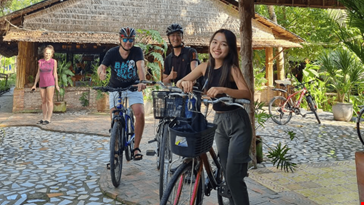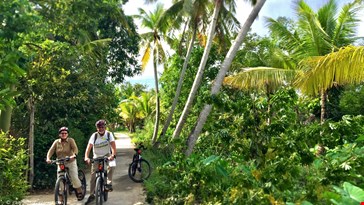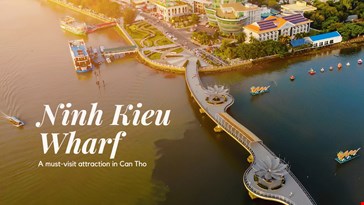
Cai Rang floating market is one of the most famous and biggest floating markets in the Mekong Delta. It is also a living museum of the southern traditional culture that has been fostered by the Mekong Delta’s interlacing waterway systems. The market is on the Cai Rang river. It is five kilometres by road from the centre of Can Tho. It is a wholesale market, selling fruits, vegetables and other agricultural products from Can Tho city as well as from 13 neighbouring provinces in the Mekong Delta region.
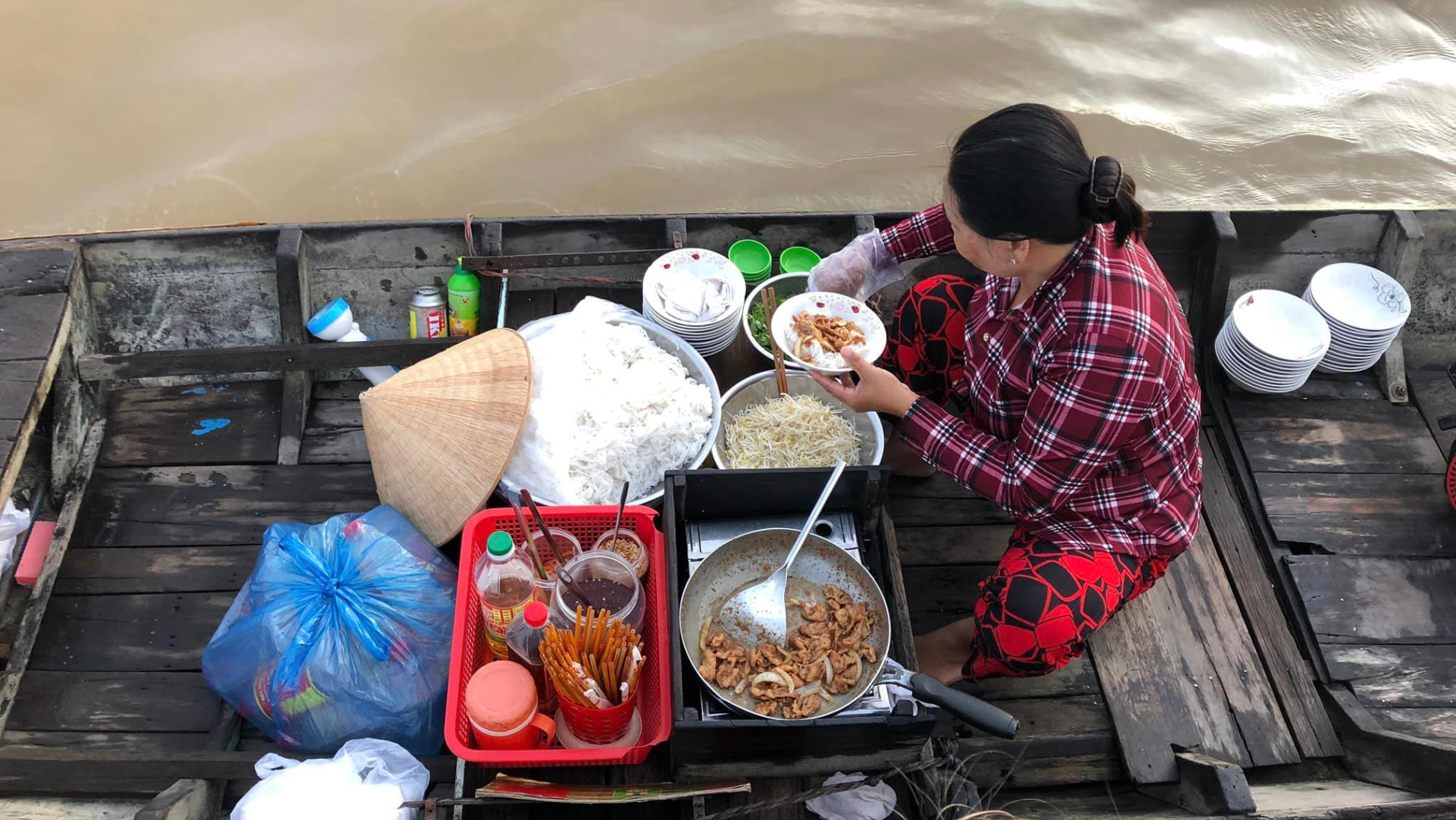
Cai Rang floating market is much more geared towards locals than tourists; therefore, it doesn’t have souvenir stalls like the other mainland markets. Unlike the mainland markets, the shops and stalls at Cai Rang floating market are boats of different sizes. The market was born hundred years ago (many French sources recorded in 1899) from the local people’s habit of travelling and doing business by boat on the region‘s interlacing waterway systems. In the south-western region, boats and rafts are important means of transportation, like motorbikes and cars are in other regions. Cruising through the river in a boat, local vendors conduct all their business right on the water. All the goods are transported to the market by rafts (not much now), sampans and boats. The floating market is not only a place where rural products are sold but also unique features of life are found on these boats. The market constitutes a “canal civilization” with many traders living on the river and some link their lives with their boats. On the deck of the boats, visitors can see generations of one family, children or babies, and even some dogs, chickens and gardens, as the boats are the familys’ mobile homes.
The floating market has made a contribution not only to cultural exchange but also waterway economic development. The market opens every day from sunrise until evening and the busiest time is from dawn until 9:30 a.m. In the early morning, the waterway becomes a maze of hundreds of boats and junks of all sizes are anchored along the river about a kilometre; all carrying a variety of seasonal fruits and vegetables. Traders come to the market to buy fruits and vegetables and then bring them to other markets or the big trucks will take them all to many mainland wholesale markets (mainly in HCMC). Unlike shops and stalls in ordinary markets, sellers cannot cry out to advertise their wares since it is impossible to be heard amidst the noise of running boat engines. That is why it is essential for each boat to display a long upright pole (the locals call “Cay Beo”) at its bow on which the sellers hang samples of their products. If they sell bananas and durian, they will hang bananas and durian on the pole (“Cay Beo”) so that buyers can see what items are on sale from a distance. This way of selling is simple but has existed over a hundred years.
Recently, to meet the demands of traders and visitors throughout the market, many new services have been created. Going to the market now, visitors not only find people buying and selling agricultural produce but also find floating restaurants, floating bars, floating gas stations, and many other floating shops which sell breakfast, coffee, beer, soft drinks, rice wine, cigarettes and even the lottery tickets. These boats are often small, so they can move through crowded areas to serve people. Boats also operate like taxis which is very convenient for tourists to hire and travel around the floating market.
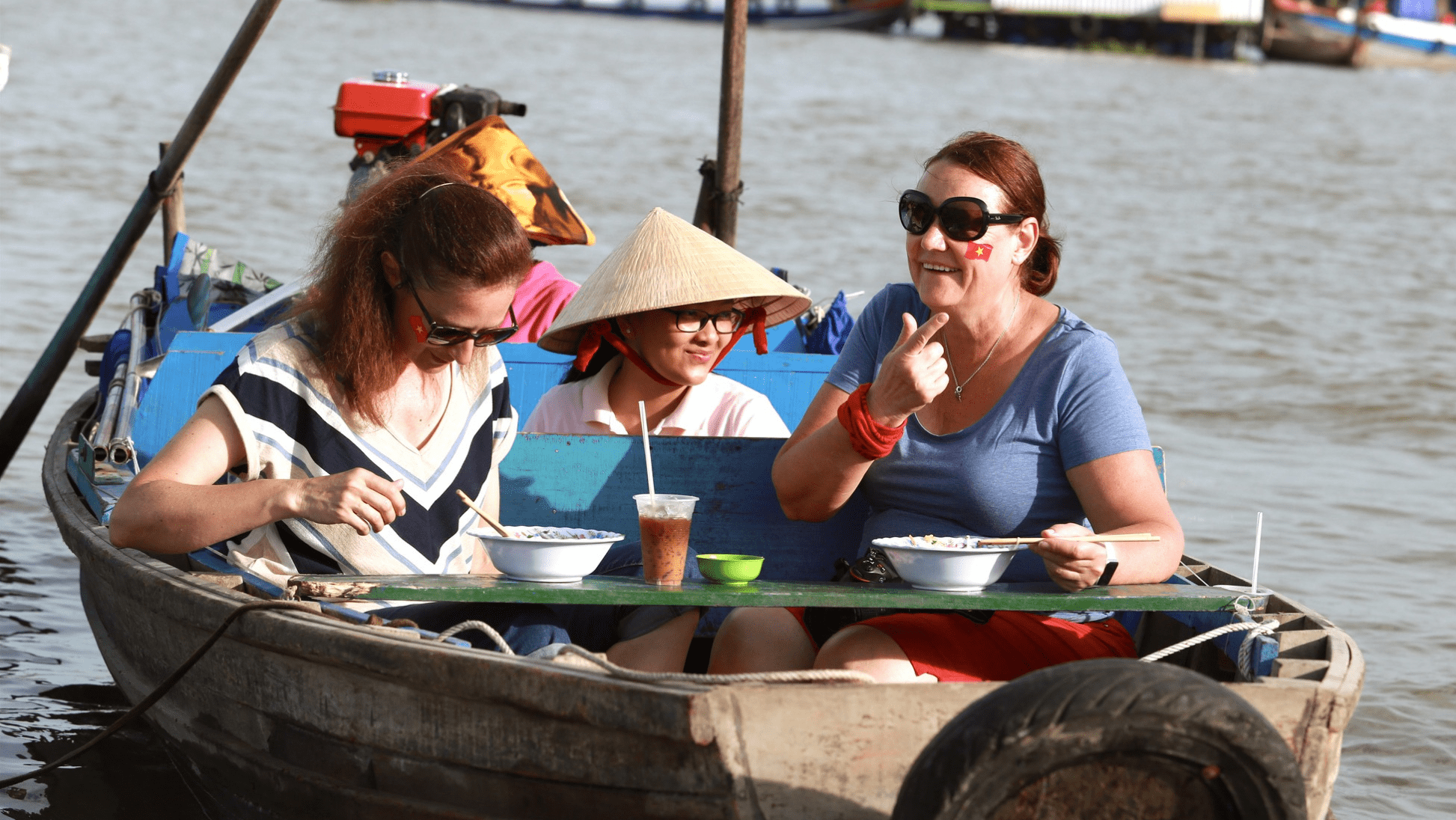
With the advent of several new road networks and bridges over many rivers, as well as the setting up of supermarkets on the mainland, the indispensability of floating markets has been dented somewhat, but the waterways still offer the only route to several rural remote areas in the Mekong Delta region. Many locals still prefer floating markets, which have been a part of their daily lives and livelihoods for generations
Unlike floating markets in Thailand, floating markets in Vietnam, including the Cai Rang floating market, have evolved naturally over hundred year. Thus, they are not only markets but also bring with them features of traditional culture. This specific feature of the floating market attracts both Vietnamese people and foreign tourists. According to Vemekong inspections, the market has about 300–500 local boats and many tourist boats each day. Trading activities at the Cai Rang floating market are an occasion for visitors not only to buy indigenous specialties but also to sense the hardships of the sellers and learn more about the local peoples. A visit to the Cai Rang floating market is a great way to experience how the local population uses the river canals for transportation and commerce.
It is a market for agricultural goods, especially fruits. There are a hundred and one kinds of tropical fruit such as mangoes, mangosteens, rambutans, dragon fruits, longans and the like. You will still somehow find strangely comfortable moments while immersing in the rustic lifestyle of the Vietnamese and breathing in the cool breeze of the great river. A drink seller will also approach you via boat. You can enjoy a fresh coconut, Vietnamese coffee and even try local bun rieu – noodle soup…from the floating boats. A bridge nearby offers great views, but nothing compares to exploring the market by boat. However, only the Cai Rang floating market is not enough to know well about the floating culture of locals. Top tip: In the US program Masterchef season 4, episode 21, broadcast on August 28, 2013 on Fox TV channel, Vietnamese noodle soup has become a difficult topic for the contestants in the top 5. Gordon Ramsay’s favorite dish when he came to Cai Rang floating market, Can Tho, Vietnam. Do not miss the noodle soup (Hu Tieu or Bun Rieu) there!
If you do not have much time left, it is easy to check out spots in one full day by boat or with bike or with motorbike and car. But there are much more than tourist sites like these in Can Tho. Make sure you have more time to feel and explore more about the hidden gems and the culture, food, night life, wildlife and forest as well. Top tip: Stay in a homestay nearby, so you have more chances to visit it and surroundings.
If you are looking for the package Can Tho day tour with local, you can contact www.canthobiketours.com or Hotline/WhatsApp/WeChat/Zalo +84962 008 953; email: info@canthobiketours.com


